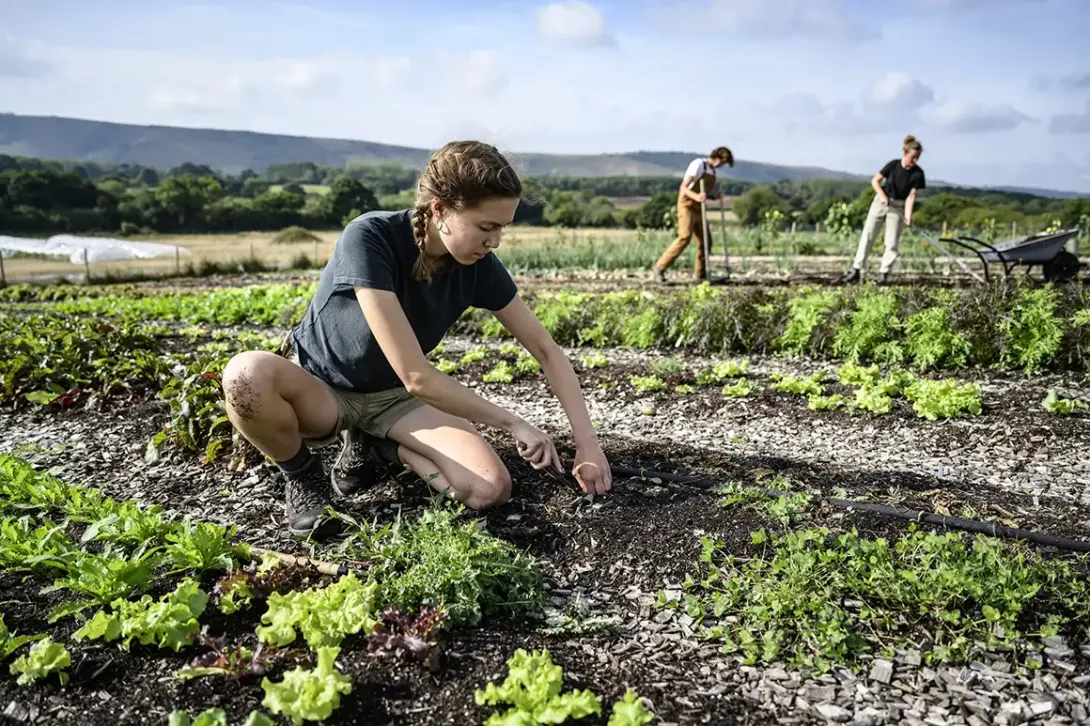
What is regenerative agriculture?
Regenerative agriculture uses innovative agricultural, livestock or forestry techniques to improve soil health.
Regenerative agriculture relies on science and technology to support the idea that soil health is strongly connected to the sustainability of the whole food chain. Its main objective is to conserve and rehabilitate agricultural environments to make them more productive, combat climate change and to provide soil that is full of life and organic matter.
In other words, regenerative agriculture seeks to promote and maintain the biodiversity of the land so that it can produce food sustainably. To achieve this, regenerative agriculture is based on a series of techniques and practices that protect and restore soil health.
The origins of regenerative agriculture
This term first appeared in the 1980s, when the Rodale organisation developed an alternative to conventional agriculture, which was damaging the land, the planet and human health. They looked at the effects, for example, of the use of chemicals and pesticides and how they affected the quality of the soil and, consequently, human health.
Today, regenerative agriculture mainly promotes the recovery areas with degraded soil, and it does so by increasing its organic matter content. This new approach to agriculture is proving that it is possible to regenerate and revitalise the land and entire ecosystems through good practices that increasingly resemble naturally-ocurring processes.
The four principles of regenerative agriculture
Aimed at making the land more productive and healthier, regenerative agriculture provides farmers with tools to improve their productivity without relying on externally added substances and prioritising natural resources.
Regenerative agriculture is both environmentally friendly and profitable. To achieve this, it is based on these four principles:
- Improving soil health. The aim is to increase the fertility and quality of the soil using green manure, composting, crop rotation...
- Increasing biodiversity. Regenerative agriculture encourages crop diversity and bringing livestock into the agricultural system.
- Reduced use of external products. This type of agriculture minimises the use of chemical products such as pesticides or fertilisers. Instead, it opts for natural solutions that revitalise the land and promote biodiversity.
- Less carbon emissions. Through good practices, atmospheric CO2 is captured and stored in the soil. This reduces the environmental footprint of agriculture and combats climate change.
The benefits of regenerative agriculture for people
A healthier soil has higher potential for greenhouse gas sequestration and, at the same time, limits the erosion of semi-arid land. This makes farmland more resilient to extreme weather events. Another advantage of regenerative agriculture is that it removes the residue left by more traditional husbandry, because it avoids excessive use of fertilisers, pesticides and even plastic.
Finally, this type of soil increases water retention, thus reducing atmospheric CO2 levels. Regenerative agriculture is therefore a good solution to deal with the climate crisis.
But the benefits of regenerative agriculture go beyond protecting biodiversity or improving soil quality. This new agricultural approach also has positive benefits for people.
Crops produced by regenerative agriculture, because they grow in healthier, chemical-free soils, provide more nutrients and achieve better nutritional quality. In other words, they improve our dietary health.
For example: both meat and dairy products from regenerative agriculture contain phytochemicals, important antioxidants not found in conventional products, and beef from regenerative agriculture farms contains 300% more omega-3 fatty acids compared to traditionally raised beef.
Ultimately, regenerative agriculture not only takes care of the land, it also improves the food we eat. The future therefore lies in a world where regenerative agriculture is the norm rather than a fad. Its benefits have already been proven to extend beyond matters of environmental sustainability to help achieve resilient food systems and better global health.




